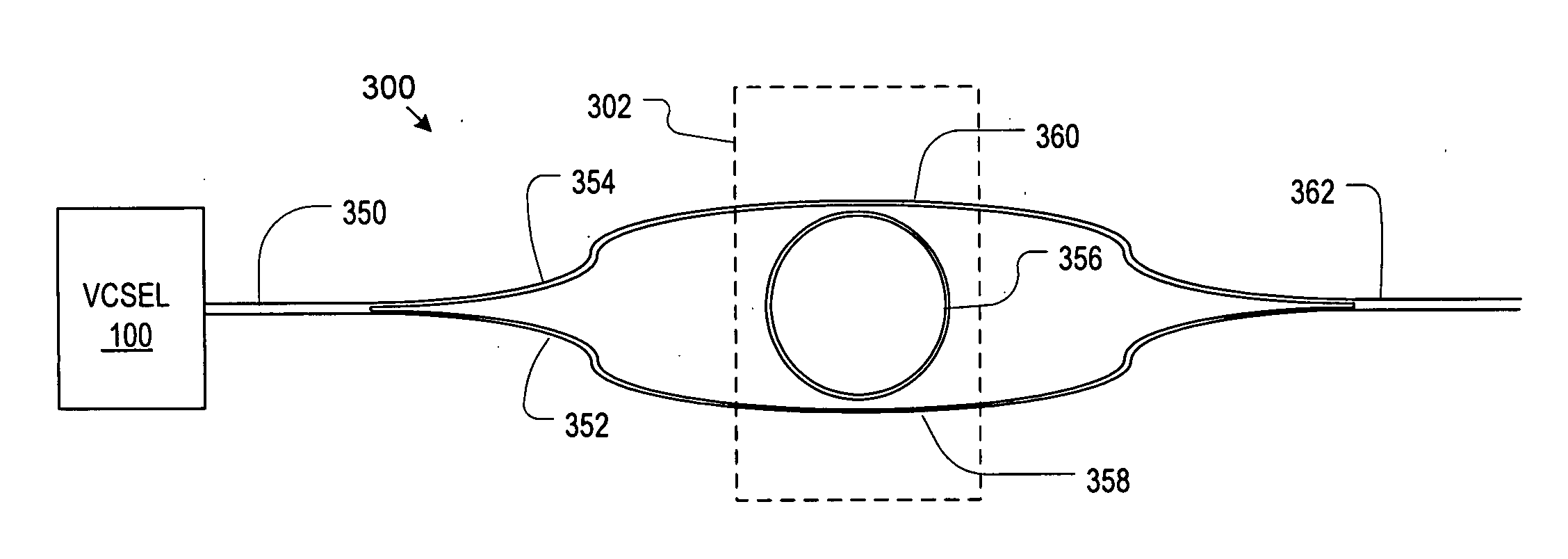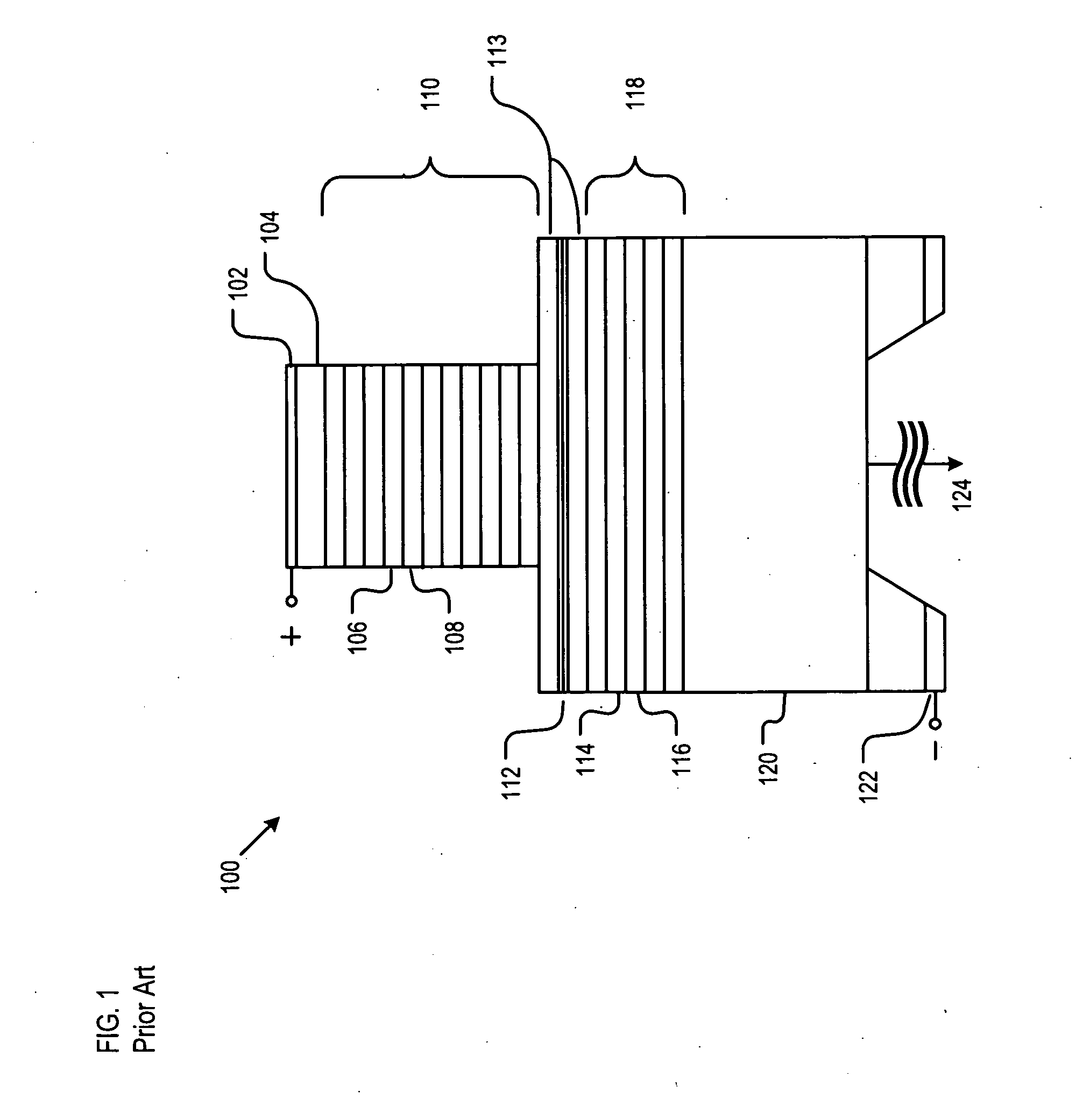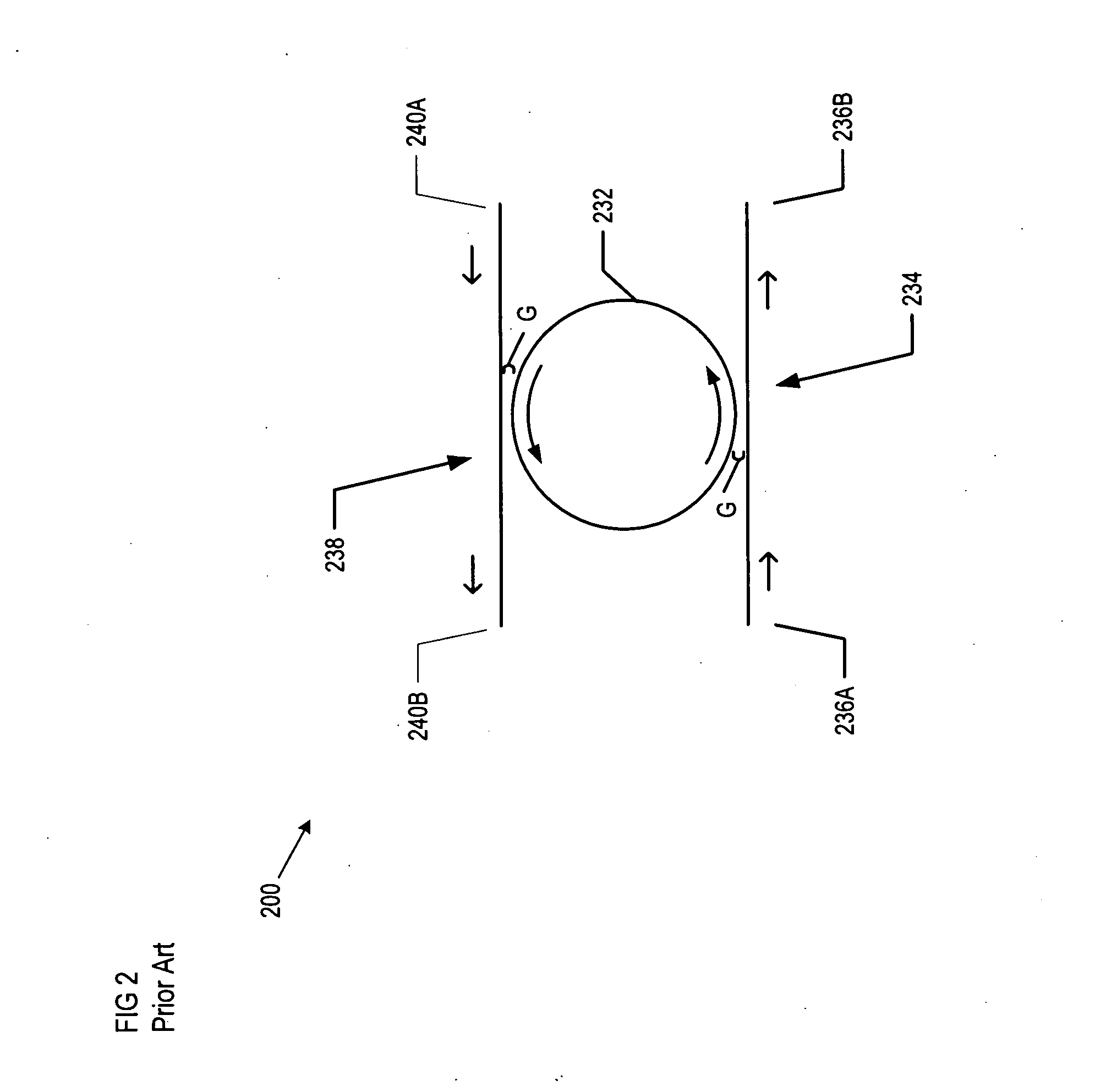Narrow Spectrum Light Source
a narrow spectrum light source and wavelength spectrum technology, applied in the field of integrated optics and vcsels, can solve the problems of relatively high signal attenuation of waveguides and not suitable for most applications
- Summary
- Abstract
- Description
- Claims
- Application Information
AI Technical Summary
Benefits of technology
Problems solved by technology
Method used
Image
Examples
Embodiment Construction
[0053]The terms that appear below are provided with the following explicit definitions for use in understanding the specification and interpreting the appended claims:[0054]Free spectral range is the distance (in frequency or wavelength space) between adjacent transmission peaks.[0055]Spectral component refers to optical energy characterized by a particular wavelength, such as is typically present in the emission from a laser. In the context of real-world technological applications, as opposed to a theoretical discussion, a spectral component will never actually be characterized by only a single wavelength. Rather, the electromagnetic spectrum of the spectral component will include a plurality of wavelengths that are centered about a predominant, primary or center wavelength.[0056]Evanescent-coupling relation refers to a relationship between two or more elements, typically optical waveguides, wherein an optical signal traveling through one of the elements is capable of coupling at l...
PUM
 Login to View More
Login to View More Abstract
Description
Claims
Application Information
 Login to View More
Login to View More - R&D
- Intellectual Property
- Life Sciences
- Materials
- Tech Scout
- Unparalleled Data Quality
- Higher Quality Content
- 60% Fewer Hallucinations
Browse by: Latest US Patents, China's latest patents, Technical Efficacy Thesaurus, Application Domain, Technology Topic, Popular Technical Reports.
© 2025 PatSnap. All rights reserved.Legal|Privacy policy|Modern Slavery Act Transparency Statement|Sitemap|About US| Contact US: help@patsnap.com



